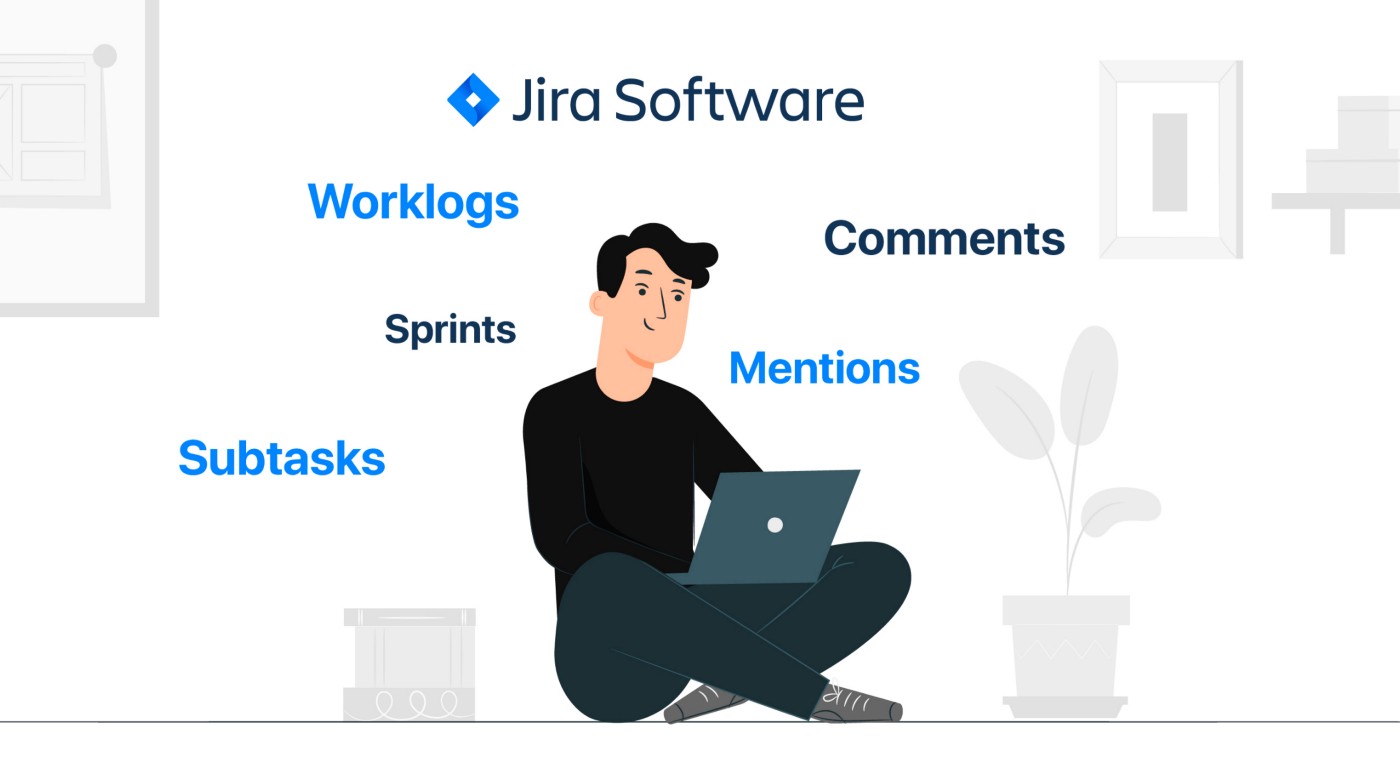The rapid pace of the global economy is expected to drive the demand for more effective workflows and processes across various industries, prompting organizations to adopt the necessary tools and workflows to improve their productivity and retain a competitive edge.
Businesses can do this by automating more repetitive and mundane tasks to allow employees to focus on more fulfilling, creative, and productive activities. This can lead to improved customer and client experiences with products or services and improved employee experience within a company. The desire to improve operational efficiency will drive demand for workflow automation in the coming years. The global workflow automation market is currently estimated to be valued at $21.7 billion and is expected to reach $34 billion by 2030.
In this article, we'll closely examine the details of workflow automation, examples, and tools your business can use to reduce the time your employees spend on routine, manual tasks.
How does workflow automation work?
To answer this question, let's look at the three basic components of any workflow, regardless of its type.
Components of a workflow
Every step falls into one of these categories:
- Input: The resource that initiates or completes a workflow phase.
- Transformation: Refers to the direction or rule of how input is received and what happens when this happens.
- Output: The final deliverable of a workflow process and the result of transformation. It can also function as the input for the step that follows.
It's possible to simplify workflow procedures to these three components even on a higher level. Most processes have several inputs, transformations, and outputs.
Here are other essential terms related to workflows:
- Actors: People or machines responsible for the work.
- Activities: Tasks or business processes that are performed. They represent a single, logical step in the process.
- Results: The outcomes of each step.
- State: This occurs when a project is between processes. Flow control ensures that processes flow in the specified sequence.
Automating the process
Modern workflow automation refers to processes that automate the components of workflows described above that deal with tasks, documents, and information flow from one work-related activity to another based on defined business rules. This type of automation should be straightforward and executed regularly to improve everyday production.
Automating workflows allows users to structure duties and accomplish goals. Regarding individuals, workflows are steps that must be followed to achieve a goal. A workflow for small and large groups is a set of tasks assigned to each member that must be completed for the group to benefit or achieve a common goal. Common workflows that can be automated include:
- Human resources
- Finance
- Procurement
- IT service requests
- Sales
- Marketing
If simplified, the process of automating a workflow looks like this:
Identify the steps required to complete a task
Create the rules and logic to guide the program in executing the task
Write these rules as "if-then" statements
The program determines how to perform the task using these rules
Here's a more descriptive look at the "if-then" statements you'll need. They explain what actions to take and how to move from one task to another. With the help of these rules and logic, the software performs a sequence of tasks, eliminating the need for humans in the process. For instance, here's what you can choose for each part:
- When this happens…: The trigger to start an automated action, such as comment added, comment edited, issue created, issue resolution changed, etc.
- If these match…: Optional conditions to ensure that the rule only affects specific issues or activities on your service project. May vary depending on the first trigger. Here are some examples: issue matches, comment visibility, user type, comment contains, comment is primary action, resolution change, etc.
- Then do this…: The action that the rule actually does for you, such as transition issue, add comment, alert user, edit request type, edit issue, send an email, webhook.
The complexity of the tasks differs based on the parties and workflow involved, but automating workflows has the following universal goals and intentions:
- The right person is permanently assigned the right task.
- The timely completion of work tasks by providing the necessary information to a team.
- Reduce errors and prevent delays in processes through custom workflows.
- Route mundane tasks and automatically pass forms down from one level to another.
- Provide transparency and accountability by standardizing work.
Workflow automation examples
Here are some use cases of workflow automation in different departments:
Sales department
Lead qualification and assignment: Automate the process of qualifying leads based on predefined criteria and assign them to the appropriate sales representatives. For example, leads from specific industries or regions can be automatically routed to specialized sales teams, ensuring timely follow-up and increasing the chances of conversion.
Marketing department
Email campaigns: Automate email marketing campaigns based on customer behavior and engagement. For instance, new leads can receive a series of welcome emails, while existing customers might get targeted offers or updates based on their past interactions and purchase history.
Software development
Bug tracking and reporting: Integrate bug tracking systems like Jira with version control and communication tools to automatically create, update, and assign bug reports. This ensures that issues are promptly logged and addressed, improving the efficiency of the development and QA teams.
Benefits of workflow automation
Regardless of the industry or sector where workflows are automated, the advantages are typically the same: streamlining business processes and reducing costs. For example, through business and marketing process automation, companies like IBM, McDonald's, and Siemens have all significantly reduced costs by implementing workflow automation practices in IT, sales, and logistics.
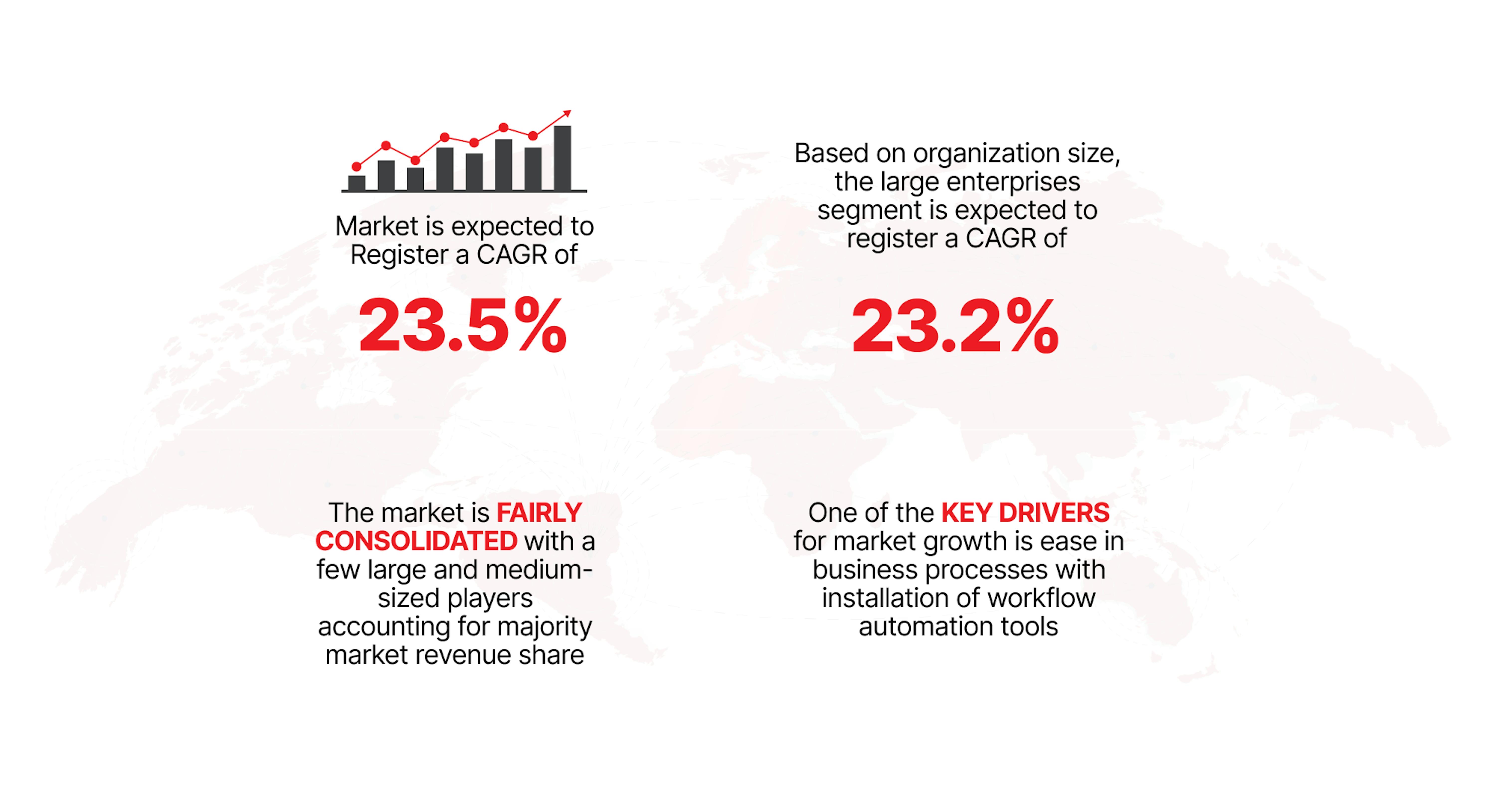
Workflow automation market overview by Emergen Research
Here are other benefits of using workflow automation:
- High-value tasks: As a result of automating mundane, low-value tasks, workers can focus on higher-value tasks that are more interesting.
- Cost savings: Increased productivity leads to fewer resources spent on less valuable tasks.
- Transparency: Workflow mapping creates visibility into the processes being automated. A top-down view of an organization's workflows can help it identify outdated or redundant tasks that drain resources and time.
- Communication: Increased visibility can enhance employee and interdepartmental communication and coordination, further improving efficiency and eliminating bottlenecks.
- Streamlined customer service: Automating responses to customer inquiries can improve customer service and satisfaction.
- Improved product quality: Reducing human error enhances a product's capabilities and customer experience.
- Performance tracking: Automating a workflow allows stakeholders to track its performance from beginning to end by digitizing the tasks within it. Using this tool, a business can easily assess everything is running.
Any department in an enterprise can reap the benefits of workflow automation, including finance, human resources (HR), marketing, operations, and sales. Likewise, automation not only helps companies with internal processes but also forms the backbone of staying competitive in the 21st century. This doesn't just concern large companies, either. In fact, Zapier reported in 2021 that 94% of small and medium-sized business (SMB) workers perform repetitive, time-consuming tasks and that automation improved their jobs and made them more productive.
According to Forrester, in 2024 businesses and organizations are investing in automation to achieve this goal primarily in the following areas: operations, onboarding, finance, compliance, documentation, engineering, case management, and customer-facing tasks. What is more, workflow automation in these areas enables SMBs to compete with larger entities.
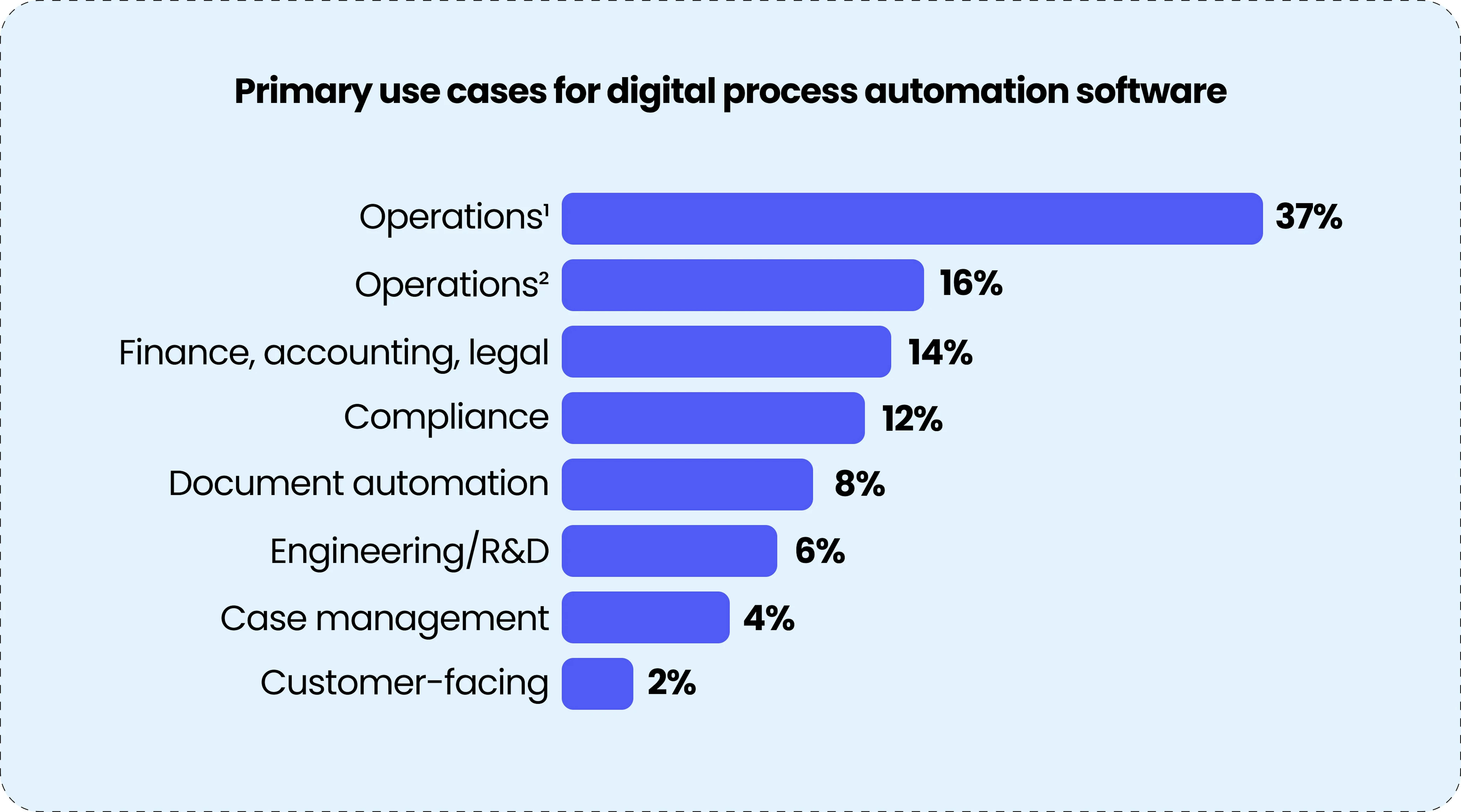
As companies experience the benefits for themselves and see their competitors achieving higher results, these trends will only continue to rise.
Overview of the workflow automation market
As the capabilities of automation technologies grow, their business applications are expanding. According to a report by McKinsey & Company, up to 30% of the hours worked globally could be automated by 2030. The exact number will differ by industry and country, but businesses are seeing the benefits mentioned above that come with introducing more automation into their workflows. They help businesses save time and money and improve operational efficiency by supporting employees to stay on track and increase their productivity. With increasing amounts of data too, businesses need this technology to help manage and use the information they collect.
This number doesn't only include repetitive, routine work performed by employees working with customers or products but also business strategists and executives. For example, a Gartner study found that these individuals see AI and analytics as crucial to their success in years to come. Furthermore, they believe the share of automation in planning and execution activities will increase from 15% to 50%.
At present, the prominent players in the global workflow automation market are:
- IBM Corporation
- Oracle Corporation
- Pegasystems Inc.
- Xerox Corporation
- Appian
- Bizagi
- Ipsoft, Inc.
- Newgen Software Technologies Limited
- Nintex Global Limited
- Opentext Corp.
Now, let's shift our focus from a global view of the market to specific categories within workflow automation. They are based on the type of solution used:
Artificial intelligence
Used predominantly in the software segment to automate various tasks and processes and in the services segment to analyze and manage data. Among the various types of files used in workflow automation, optical character recognition and optical mark recognition are expected to be the fastest-growing segments in the next few years.
Cloud-based solutions
The increasing number of companies focused on the use of the cloud has created a huge opportunity for these solutions to improve their processes by implementing automation techniques designed to yield productivity and efficiency. According to the Flexera 2024 State the Cloud Report, most businesses have adopted a hybrid approach of using private and public cloud services for data storage and other applications. Cloud-based solutions are expected to grow faster than traditional ones since they allow businesses to keep their operations flexible and provide real-time access to their data.
Some hindrances to the market's growth include data breaches and illegal access to corporate operations, as well as a lack of knowledge about technology and the integration of multiple systems. However, companies are working to make the technology more robust and resistant to threats.
Key market trends
With the growth of the workflow automation market assured, observers have noted two trends the market can expect in the coming years.
Increasing adoption of IoT across industries
The rapid emergence and evolution of new business models and the falling cost of devices have contributed to the rise of the Internet of Things (IoT). A growing number of devices, such as cars, meters, and wearable electronics, are now connected.
These devices provide buildings with a new level of intelligence by analyzing their system-level data. Energy services companies and other organizations are using this technology for better diagnostics and fault detection. AI algorithms can now solve complex problems that are typically encountered in large buildings.
Industry 4.0 policies have created a new generation of process management tools designed to automate various processes in the manufacturing industry. These tools are being used to replace traditional paper-based workflows. Thanks to the rise of BYOD policies and mobility, almost anything in the global economy, including machinery and sensors, is now connected to the networks.
Forecast end-user spending on IoT solutions worldwide from 2019 to 2025
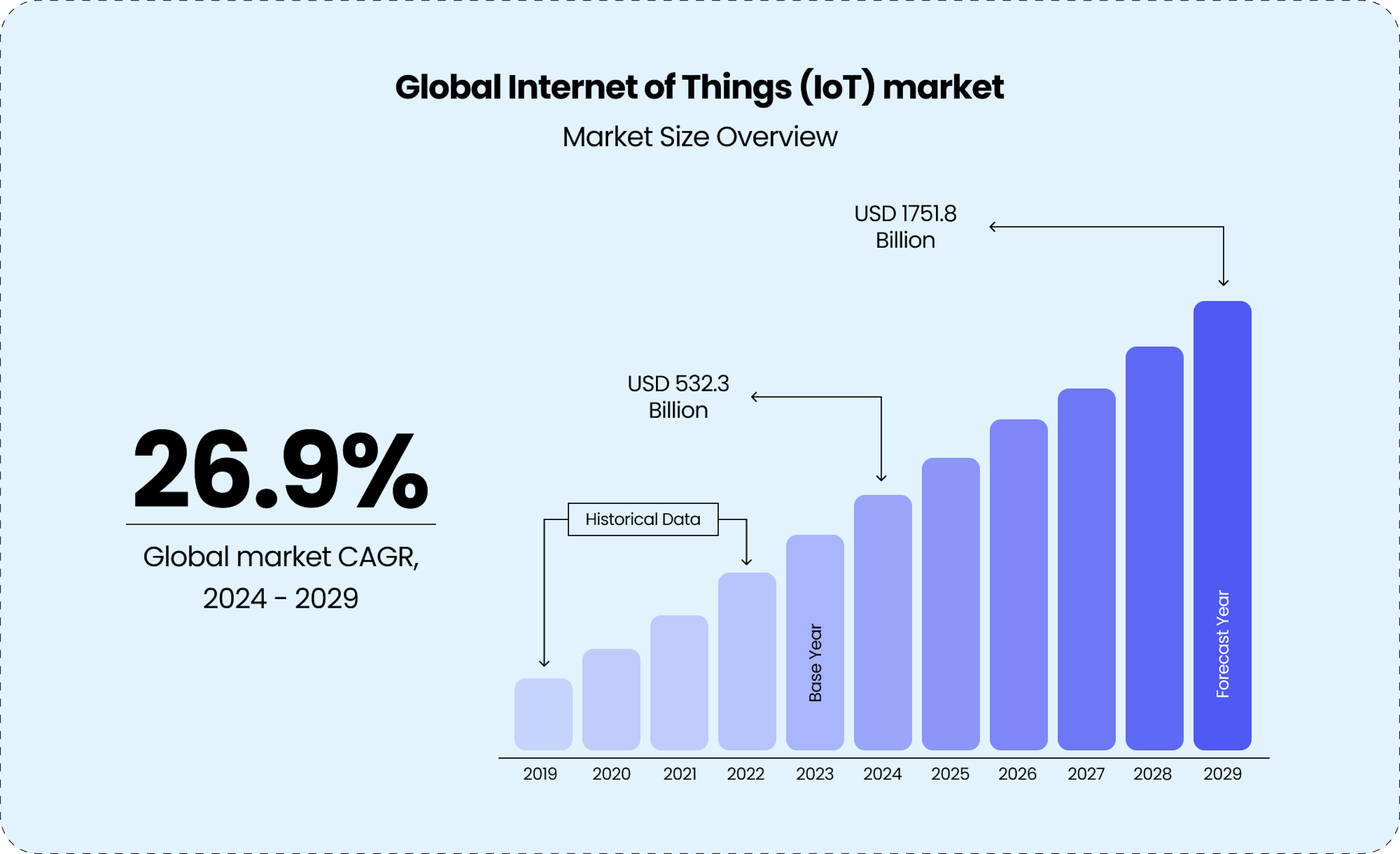
Source: Market Data Forecast Analysis
Growing Asia-Pacific market
India, China, and Japan are some of the countries expected to be prominent players in the workflow automation software market.
Due to the increasing competition in China's market, various industries have started implementing digital transformation programs to improve their efficiency. In 2021, China Unicom partnered with Huawei to develop and deploy an AI-based network management platform designed to improve its operations' efficiency. The company's AI-based platform was able to automate various tasks and improve the customer experience while reducing the cost of its network. The platform was built on Huawei's AUTIN system, which was used to roll out 5G networks. The Chinese government has supported these and other initiatives through the "Made in China 2025" program, leading to an estimated automation market size of $16 billion by 2030.
One of the most critical components of the future of work is automation, and Japan is leading the way in the development of AI. According to the Nomura Research Institute (NRI), the country's AI sector is expected to grow at a high rate during the next few years. By 2035, around half of all jobs in Japan will be filled by AI robots.
Automation's rapid emergence and evolution have been a major factor in India's economic development. According to The National Strategy for Artificial Intelligence (NSAI), AI is expected to contribute to the country's annual growth rate by 1.3% by 2035.
Not only has workflow automation arrived; it's here to stay and grow. Individual entrepreneurs and professionals, SMBs, and large enterprises can all reap the benefits of automating manual, mundane tasks. Luckily, there are plenty of software options available to match any need and budget.
Best workflow automation software in 2026
Here are the best workflow automation tools in 2025 by industry and department.
Healthcare
In the healthcare industry, workflow automation can be used to generate on-call rotations and work schedules for medical providers. It can also help them transfer patients' health records. With the help of this technology, healthcare workers can focus on more important tasks, such as direct patient care.
| TOOL NAME | BEST IN | FEATURES | PRICE |
|---|---|---|---|
| Powerful automations. | - Monitoring - Document management - Customizable forms - Reporting - Process change tracking - Approval process control - Data security | On request; Free trial. | |
| Streamline patient care, records, billing, and onboarding management. | - Audit trail - No-code - Data import/export - Document management - Data visualization - Rule-based workflow | On request; Free trial. | |
| Improve patient outcomes, streamline compliance efforts, conduct audits, automate processes, manage insurance, and equip employees with optimized user experiences. | - Process change tracking - Document management - Reporting - Deployment management - Approval process control - Audit | On request; Free trial. |
Legal department
Workflow automation can automate various tasks and processes in a legal businessor a department. Due to the volume of manual work that in-house legal teams typically perform, legal workflow automation can help them take care of low-complex tasks without requiring them to hire an expert. This can include legal intake and triage and automatically generating employment agreements and NDAs.
| TOOL NAME | BEST IN | FEATURES | PRICE |
|---|---|---|---|
| Legal billing, timekeeping and project management. | - Billing and invoicing - Client management - Case notes - Forecasting - Accounting - Task management | Starting from $24.95 per month | |
| Case management, client communication, legal document drafting. | - Case management - Contract/license management - Legal case management - CRM - Calendar sync - Client management | On request. |
IT department
The information technology department uses automation to support the development and implementation of programs by groups and teams, such as the DevOps team. It can automate the various steps involved in software development, including testing new applications and monitoring data.
| TOOL NAME | BEST IN | FEATURES | PRICE |
|---|---|---|---|
| Workflow solutions for agile teams. | - Kanban board - Project planing/scheduling - Budgeting - Customizable reports - Software development | Free for 10 users; Paid starting from $7.50 per user/month. | |
| Easily set up workflows that connect over 4,000 apps. | - Real-time integration - Data sisualization - Monitoring - Notification - Managed file transfers - Big data processing | Free plan/ free trial; Paid starting from $29.99 per month. | |
| For enterprise workflow automation. | - Automated routing - Document management - Drag and drop - Task management - Collaboration tools - No code - Rules-based workflow | $910 per month. |
Finance
In the financial industry, organizations use workflow automation to automate the various steps involved in the approval and data entry processes. They can also automate tasks such as salary adjustments and paid time off requests.
| TOOL NAME | BEST IN | FEATURES | PRICE |
|---|---|---|---|
| Automation specific accounting tasks but also automates the communication between these functions. | - Task/activity management - Case management - Reporting - Forecasting - Client contract management | $210 per month. | |
| Robust and comprehensive platform for accountants. | - Journal entries - Audit trail - Invoice customization - Reporting - Payment processing | Starting from $12 per month. | |
| World-famous ERP for larger companies. | - Invoice customization - Reporting - Audit trail - AP automation - Payment processing - Purchase orders | On request. |
Marketing
Marketing automation can be used to automate various tasks and processes, such as the creation and implementation of campaigns. It can help them ensure that the tasks related to these activities happen automatically.
| TOOL NAME | BEST IN | FEATURES | PRICE |
|---|---|---|---|
| Managing marketing and sales strategy all in one place. | - Landing pages and forms - Marketing lead database - Online behavior tracking - Automated email responses - Reporting - Web analytics - Ad management | Free plan; Paid starting from $50 per month. | |
| Email marketing, marketing automation and CRM. | - Landing pages and forms - Marketing lead database - Online behavior tracking - Automated email responses - Reporting - Web analytics - CRM lead integration - Dynamic content | Starting from $9 per month. | |
| Email and SMS marketing. | - Building and personalizing Email - A/B Testing - ROI analytics - Reporting - Automated email responses | - Free plan, - Paid: a. Email - $45/month b. Email and SMS - $60/month. |
Sales department
A sales department can automate the approval of proposals, the introduction of salespeople, and the generation of task lists for meetings with potential customers.
| TOOL NAME | BEST IN | FEATURES | PRICE |
|---|---|---|---|
| Integration sales engagement, conversation intelligence, and revenue intelligence. | - Open rates, CRM integration - Click-to-call - Email platform integration - Activity tracking - Automated emails | On request. | |
| Customer engagement platform. | - Data quality management - Lead nurturing - Lead scoring and grading - Automated email responses - Automated alerts and tasks - CRM leading integration | On request. | |
| Creation document forms, payment forms or products pages in a very fast and efficient manner. | - Customizable branding - Fields - Forms - Reports - Templates - Email management - Real-time data and reporting - Statistics | Starting from $20 per month. |
HR department
Human resources can also benefit from the use of automation to manage various tasks and processes, such as onboarding and hiring new employees.
| TOOL NAME | BEST IN | FEATURES | PRICE |
|---|---|---|---|
| Web-based recruiting solution. | - Job requisition management - Company website posting - Publish to social media - Job search site posting - Customized application form - Resume management - Duplicate candidate prevention - Candidate search - Email templates | Starting from $10k annually. | |
| Building a robust employee training and development program. | - Content creation - Content delivery and tracking - Customer training - Content libraries, analytics | Free plan, Paid starting from $69 per month. | |
| Workflow management software that simplifies onboarding, purchasing, and recruiting processes. | - Contact management, analytics - CRM integration - Email integration - Data export - Dashboard - Data visualization - Social media integration - Reporting | Free plan, Paid starting from $22 per month. |
9 best practices in workflow automation
If you're ready to start your workflow automation journey, here are the best practices to follow.
Support an "as-code" approach
No matter how workflows are created, implement version control. Modern deployment pipelines require you to be able to store and manage workflows in some form of text or code.Variables and parameters should be able to accommodate a variety of needs
Create a single workflow "class" that can be instantiated as often as necessary but only needs to be maintained once if you have a common function. Consider using variables or parameters instead of creating multiple versions of the same service.Work visibility important
There should be a clear understanding of the process relationships. Have you ever encountered a situation when everything seems normal, but nothing is happening? That's when visualization is particularly valuable. Having a clear line of sight between a watcher or sensor waiting for an event and the downstream process that wasn't triggered because the event didn't occur is extremely valuable.Codify SLAs
A service level agreement (SLA) specifies both the services needed and the expected level of service between a service provider and a customer. The agreement may vary depending on the vendor, service, and industry.Categorize
As you turn your workflow "microservices" and connect tasks into process flows, ensure you tag objects with meaningful values that will help you identify relationships, ownerships, and other attributes important to your organization.Take care of others
You often work in a team and are not the only person managing your workflow. If you don't want to re-learn each workflow every time you modify it, enhance it, or analyze a problem. Document your workflows if they're complicated, or include comments and descriptions. Remember to revise them along with the workflow.Collect all information
When it comes to workflows for important applications, there can never be too much information. Ensure that your tool can collect everything you need.Make sure you're prepared for anything
There is no doubt that tasks will fail. You should collect the data required to fix the problem and save the information for later use. You can keep track of but can also identify problems by comparing a new failure with previous failures or successes. You should be able to define what is and isn't an error and the automated recovery actions for each situation.Find bottlenecks
Apply automation to areas where bottlenecks occur to serve your customers better and keep your team happy.
Onboarding automation in Mad Devs 🤘
At Mad Devs, we value the efficiency and productivity automation brings to our work processes. Our motto is "Automate everything," and we start with ourselves to demonstrate to others how great it can be.
Onboarding is one of the many automation cases within our company. At first, the onboarding process included a checklist for new hires to complete, but we decided that was inconvenient. Then, we decided to make the process more transparent and automated.
Now, our onboarding brings together HR managers, PMs, and new employees. The process automates a variety of administrative tasks that allow for a smooth introduction into the company and team. As a beneficial side-effect, the process has become more transparent for everyone involved.
The main tool in our process is Jira, where HRs and PMs use separate boards to track all job applicants. Once someone applies for a vacancy by email, messenger, etc., their information automatically becomes a "card" on our kanban board. At first, only HR managers work with these cards on their board, where they track all the stages the applicant completes: initial interview, technical interview, offer, etc. After a person successfully passes their interviews, accepts the offer and the date of employment is set, the card's status changes.
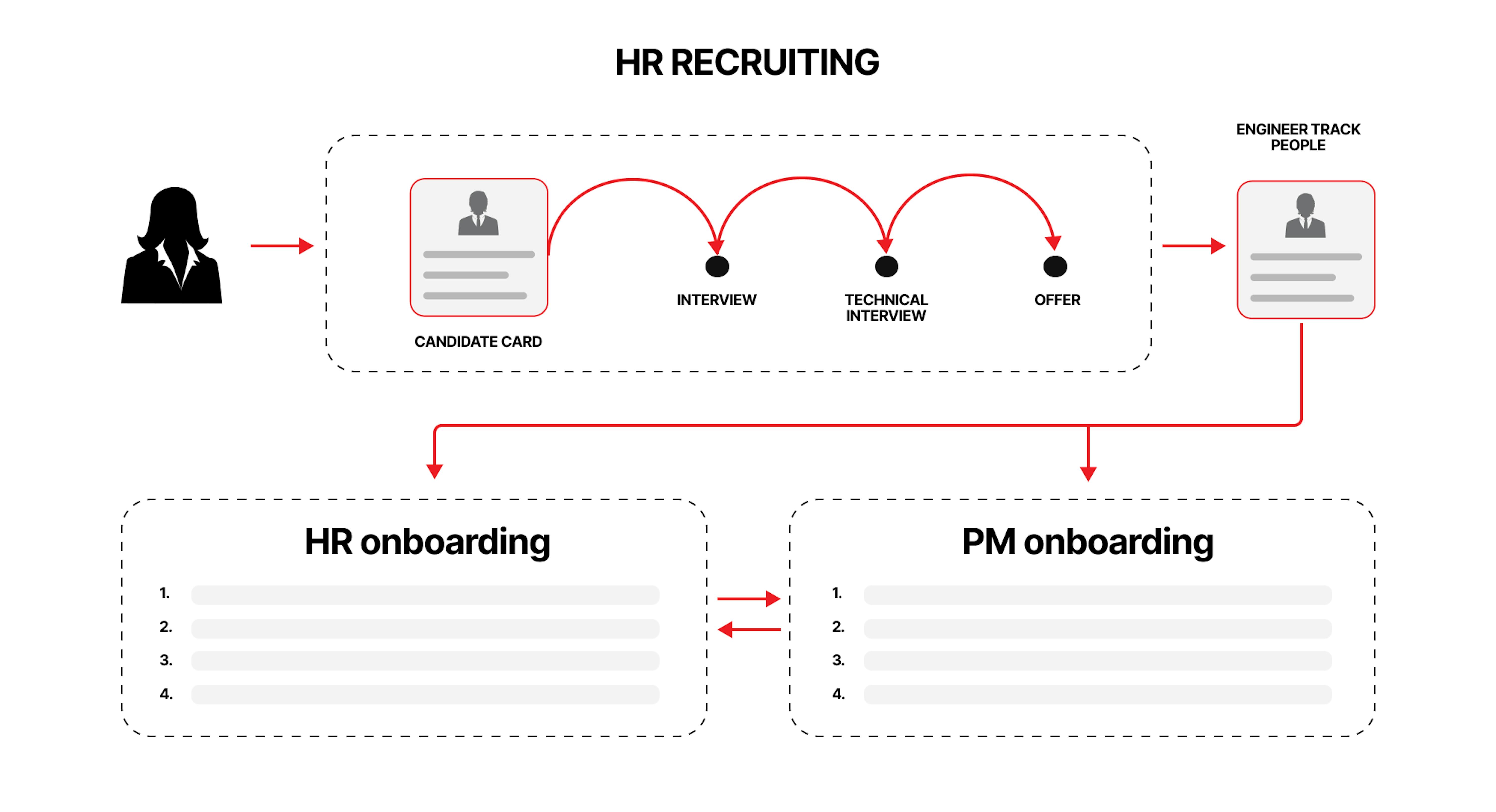
HR recruiting, HR onboarding and PM onboarding boards relationship
At this point, an onboarding task is created and divided into tasks on the HR board and PM board. Both teams can view each other's tasks. Tasks with subtasks are generated and appear on both boards. We've set up rules that automatically back up subtasks for a task and distribute them among people with certain areas of responsibility.
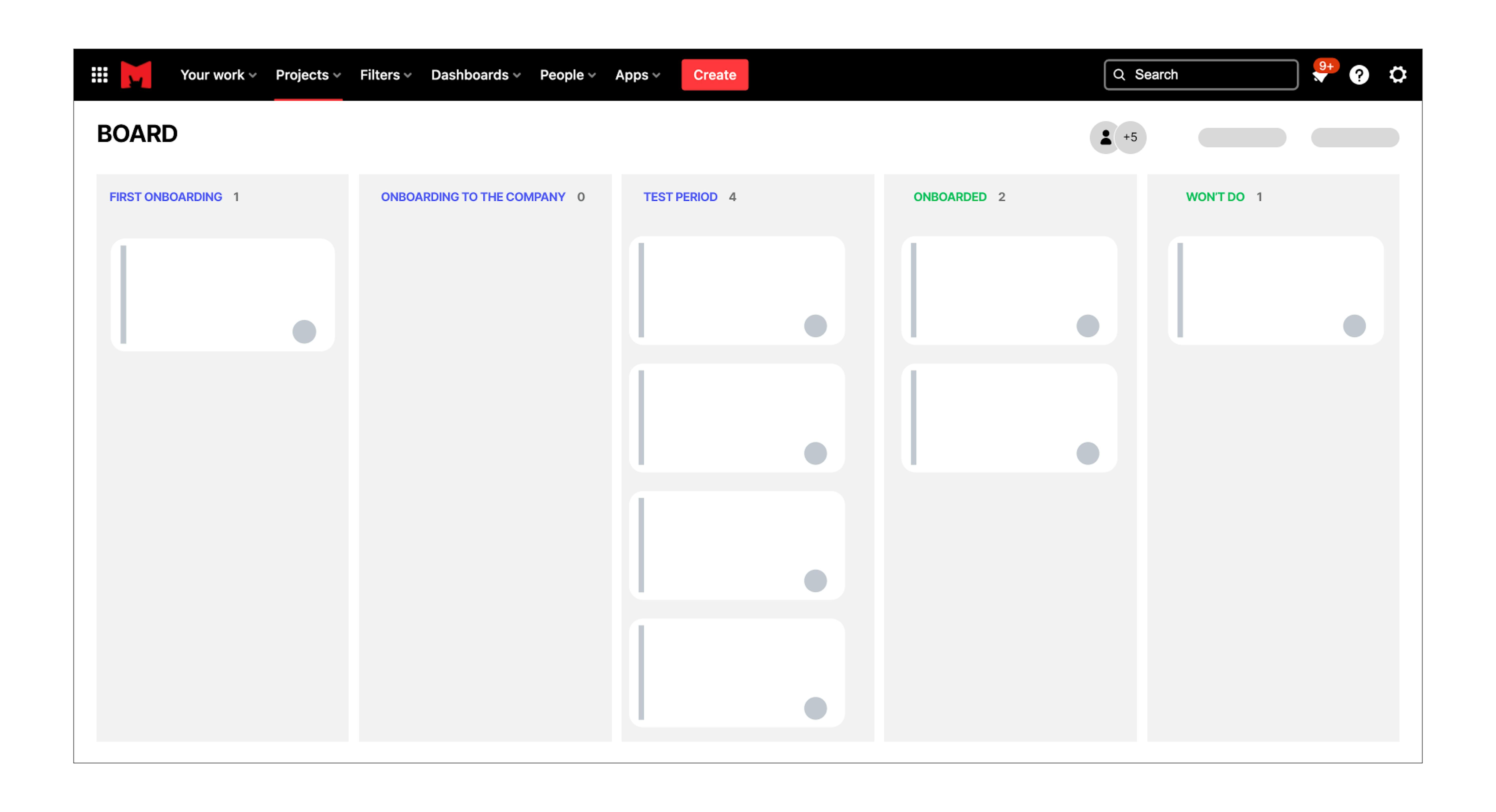
PMs' onboarding board
For example, in the first stage, we need to connect a new employee to the project. To do this, the HR manager has several subtasks, such as creating a corporate email account for the employee and connecting them to the team in Slack, etc. The PM may need to introduce a newcomer to the workflow in Jira. We understand that not everyone has worked with this tool, so the manager has several related subtasks.
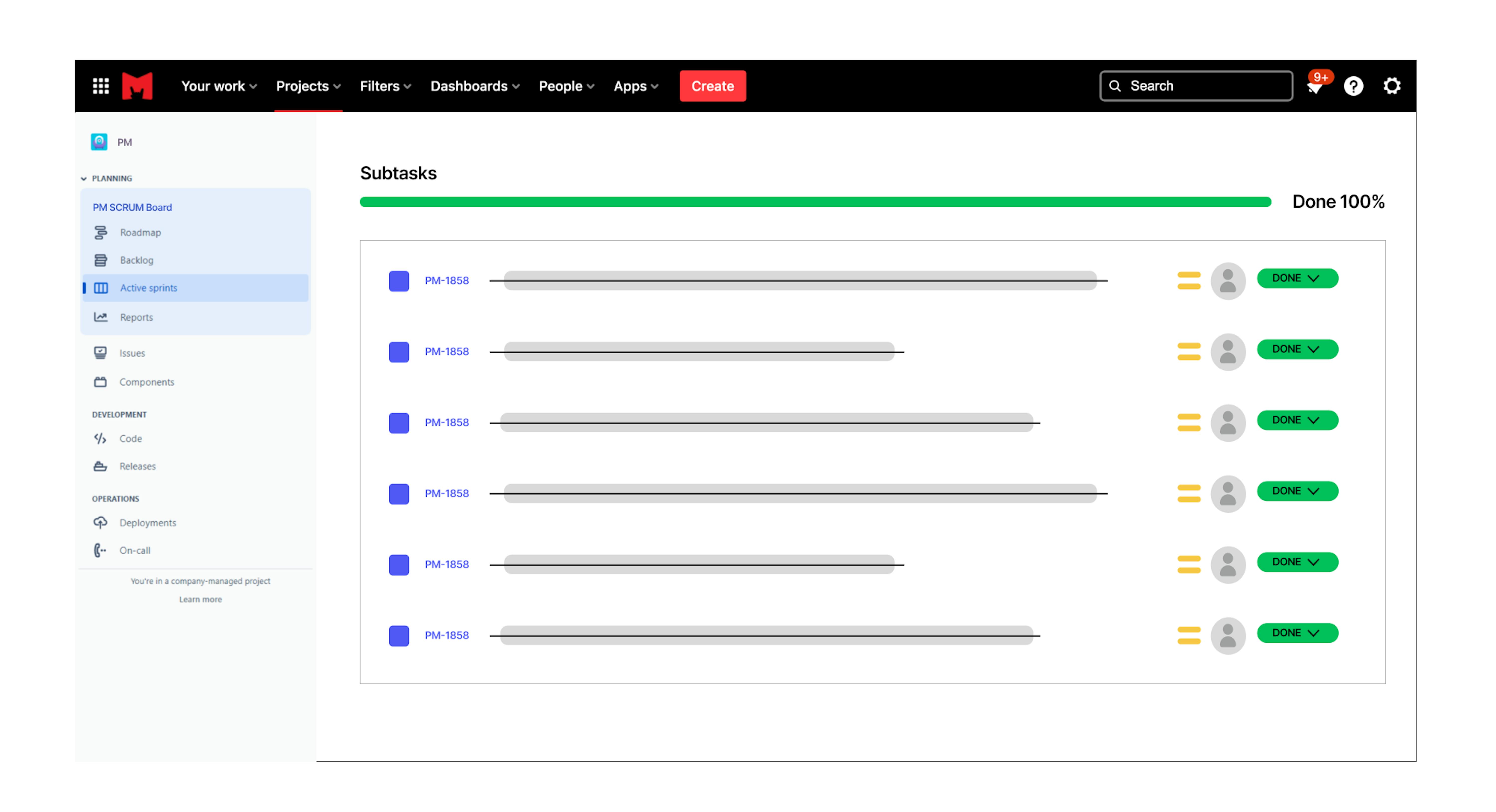
PMs' subtasks
In all these cases, creating a separate project in the Jira reduced the opacity level and increased collaboration and employee involvement. This process allows us to decrease security risks. Onboarding automation reduces the chances of these errors as it can streamline many error-prone tasks. Also, it drastically helps us improve employee retention and inspire new hires to become advocates of our company. For us, onboarding is not only an HR part of work but about working with people and including them in the process.
The future of workflow automation
Thanks to automation, work in the future will be markedly different from what we do today. The emergence and evolution of these technologies are expected to drive the demand for workflow automation software in the next few years as an increasing number of businesses look to improve their operational dynamics to remain competitive.
Due to the increasing adoption of workflow automation in the region, the Asia Pacific market is expected to grow at a high rate during the next few years. The increasing number of financial services organizations in China and India is expected to drive the demand for workflow automation software.
Automation occurs across all kinds of industries every day, from recruitment to workplace safety. The common goal of all of these technological developments is to build a better world that is safer and more inclusive for everyone. If you want to implement better automation processes within your business but aren't sure where to start, contact Mad Devs to enlist the expertise of our project management teams. They'll help you highlight the parts of your workflow that are driving growth, what is blocking your progress, and, of course, what you can automate.
Conclusion
Growing and succeeding, workflow management automation is the right step. By organizing and structuring a process into different steps that humans and workflow automation solutions can do, everyone, from entrepreneurs to business owners, can achieve their goals. With workflow automation, leadership and personnel can accomplish goals more quickly and effectively. This technology increases success rates and improves product accuracy and quality by reducing the time and effort spent on each task. Thus, workflow automation tools like Jira can help companies maintain an edge over their competitors by streamlining their business operations. If you need help with workflow management automation, feel free to contact us.



